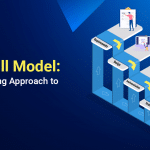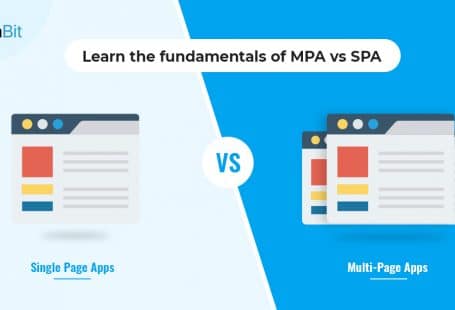In every software development life cycle, you get the flexibility to follow the processes at your convenience. And how do you do that? There are various approaches that can comply with your SDLC phases for a smoother run. These approaches originate as “SDLC models” to help you overcome specific challenges. We have already discussed one such model, “The Waterfall model,” in our previous article.
However, the waterfall model was not found suitable for large and complex projects. One of its significant handicaps was the identification of defects at the very last stage of development. To overcome this risk, another SDLC approach was brought into light: The V Model.
In this article, we will cover all the necessary aspects of the V SDLC model, including its process, implementation, objectives, advantages, and disadvantages.
So, if you don’t want to miss out on anything important, make sure you read it till the end. Here is a map of all the topics we are going to talk about:
- What is the V model in SDLC?
- How is the V concept different from other models?
- Sequential phases in the V model.
- When to use the V model?
- What can you benefit from the V model?
- Limitation to this concept.
Introduction to the “V” model
The “V” in the SDLC model stands for “verification” and “validation”. V-model is a linear methodology used in the software development life cycle. The concept fairly focuses on a sequential path of execution. But unlike other models, it emphasizes completing each phase before the next phase begins.
Few Things You Need To Know About The V Concept
- The “V” approach was first countered by the commissioning of the state of Germany for planning system development projects.
- It involves the entire lifecycle of a software system nicely fitted in the line of engineering.
- “Das V Modell” was the first official project management approach for executing projects successfully.
- The key feature of the V model is that it determines “who has to do what and when” in any SDLC project.
- Today, the V concept is widely adapted and translated in every complex software development system.
- As the name suggests, V illustrates how verification and validation can be connected within various stages.
- The development and quality assurance(testing) phase is followed simultaneously here.
Every stage in the “V” approach is very similar to the steps used in the “Waterfall model.” This might make you wonder what makes the V model different and unique.
Well, here’s your answer.
How is the “V” concept different from other SDLC models?
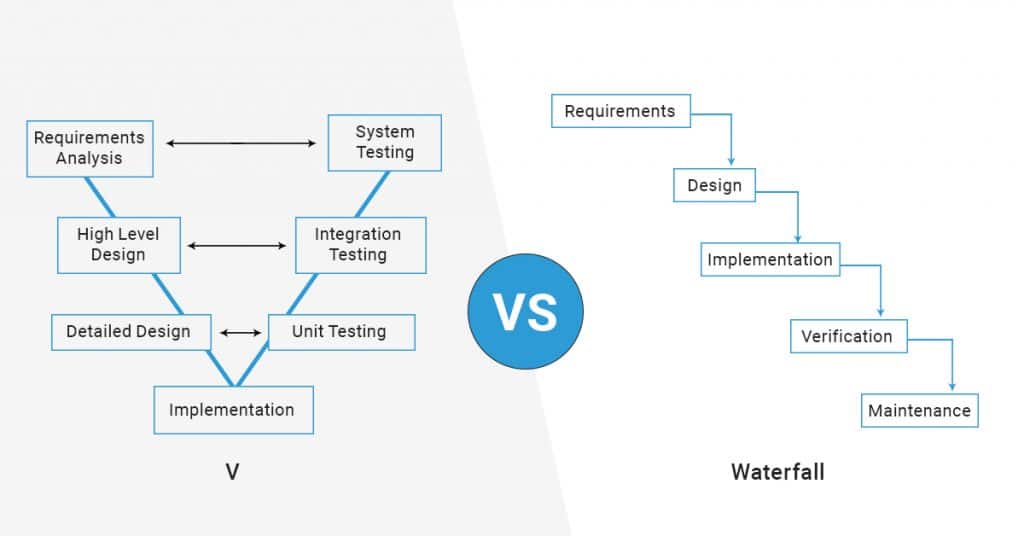
The V(verification and validation) concept overcomes the disadvantages of the waterfall model.
In the waterfall model, we realized that the testers and defects are only found at the testing phase, which is the last phase in the SDLC. This somehow turns into one challenging and costly affair, now that you are done with the analysis and integration.
V model doesn’t disappoint you till the end. Here, the testing phase starts when your product is at its early stages to avoid the downward flow of defects. This can save you from a lot of rework.
Now, before we understand the V model, let’s take a quick glance at the terms “verification” and “validation” that sum up the entire concept.
Verification
It is a stable or complex analysis technique. Just how its name implies, it focuses on the verification part. Here, testing is done without executing the code. Tasks like- review, walkthrough, and inspection are included in this.
Validation
It is a dynamic analysis technique. Here, testing is done with the code execution in order to validate the process. Tasks like functional and non-functional testing are included in this.
Now that we are familiar with both the terms, you might find the model relatively easy.
V Model and its Sequential Phases
As mentioned above, the V SDLC model is a distinguished approach where the development and quality assurance activities are performed simultaneously. There is no discrete phase for Testing. Testing starts right from the requirement and analysis. Therefore, the verification and validation go hand in hand.
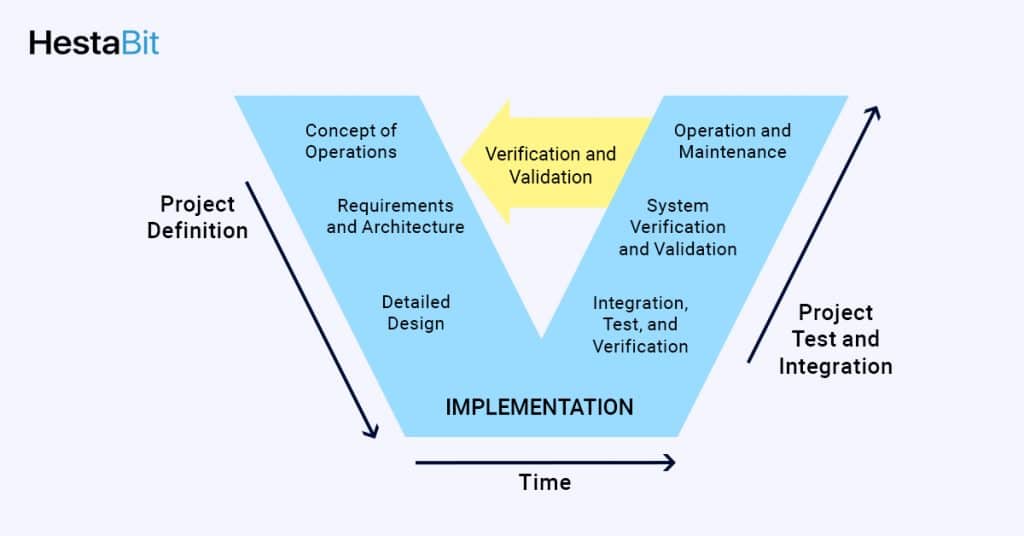
If you look at the figure above, you will notice that the left side of the V diagram consists of all the developmental activities, and the right side of the V diagram includes all the testing activities.
Since all the specifications are decided on the left side, we will call it “The Specification stream”. Similarly, the right side comprises all the testing stages; hence, we will call it “The Testing stream”.
Now, to understand this figure, let’s discuss every activity in detail. To give you a clear picture, we will also mention the verification and validation activities performed at every stage.
Starting from the specification stream (Left side) of the model
Typically, you’d be surprised to hear that testing and development can be done altogether. However, the beauty of the V model demonstrates the testing phase in all the stages of the Software development life cycle.
- Requirement and analysis
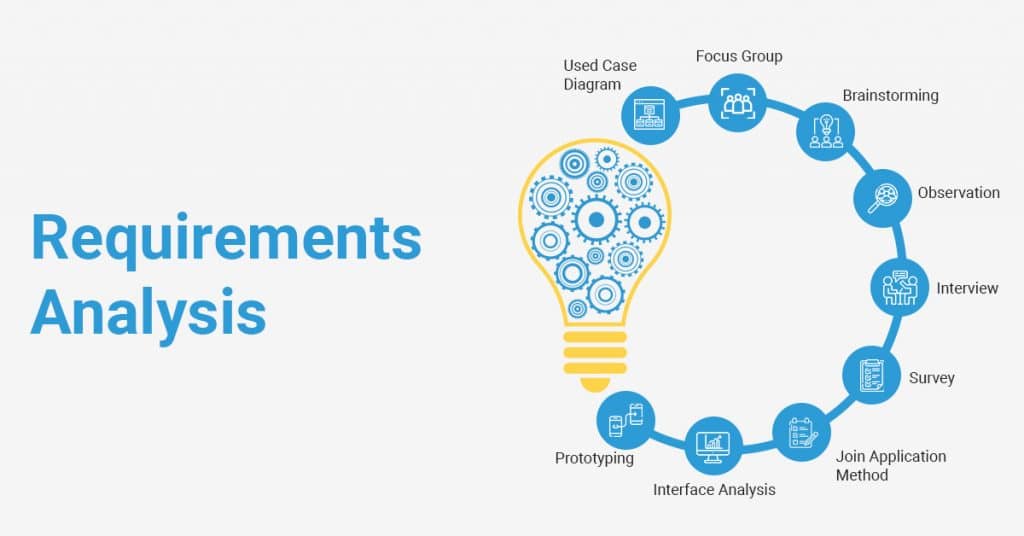
- This phase is again very similar to the analysis phase of the waterfall model. You are needed to collect and analyze specific requirements here.
- One needs to study the functions and the performance of the desired software product and focus on a satisfying user experience.
- This stage mainly involves brainstorming ideas, walkthrough sessions, and interviews to be clear about the objectives.
Verification task– requirement reviews
Validation task- User acceptance test (UAT) is created for test cases.
Make sure that you are clear with the UAT and other reviews before moving on to the next stage.
- System Requirements and Designing (High level)
- This stage includes building a high-level software system design.
- Further, the development team studies the structure and investigates implementing the resources.
- This gives you an overview of the technical feasibility of your software.
- Ultimately, you understand the dependencies and create modules according to the requirements.
Verification task– design reviews
Validation task- Feasibility metrics, modules, and system test plans are created.
- Architectural Design
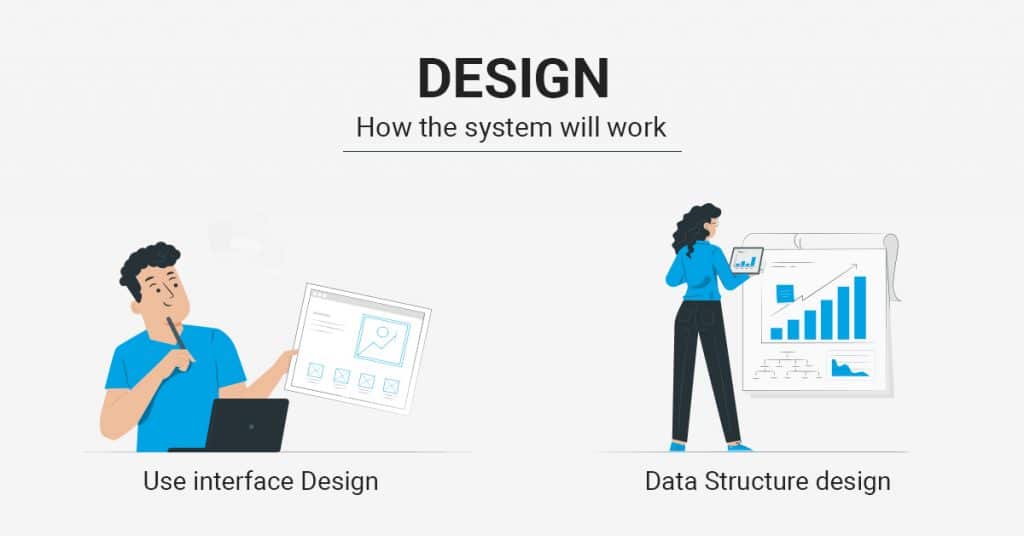
- You can build a software architecture based on high-level design.
- Further, finalize the modules, architectural diagrams, dependencies, database tables, and all other technical details.
Verification task– Design and architectural review
Validation task- Integration test plan and test cases, and other database tables are created.
- Module designing (Low level)
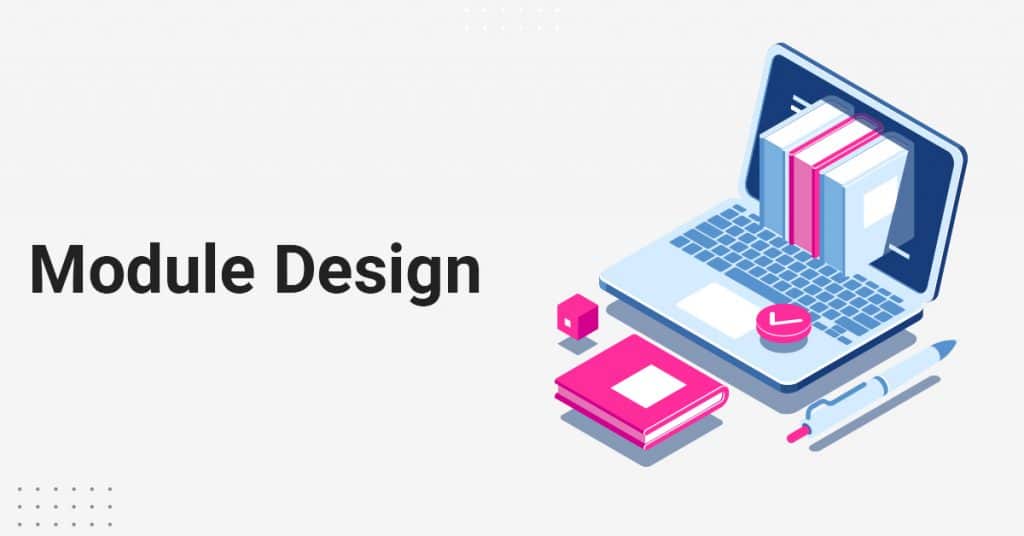
- Here, one needs to design every module of the software components separately.
- Moreover, you might also require data test reports, interfaces, and classes to comply with the guidelines.
Verification task– design review before the modules are created.
Validation task– Unit test cases and other reports are created.
- Implementation (Coding)
- This is the centermost stage of the V model.
- The actual coding is done in this stage.
Verification task– Test case and code review
Validation task- functional test cases are created while writing the codes.
Then comes the right side (Testing stream) of the model
Since every stage here requires execution, it is entirely validation-based. We will start from the bottom-most stage here.
- Unit Testing
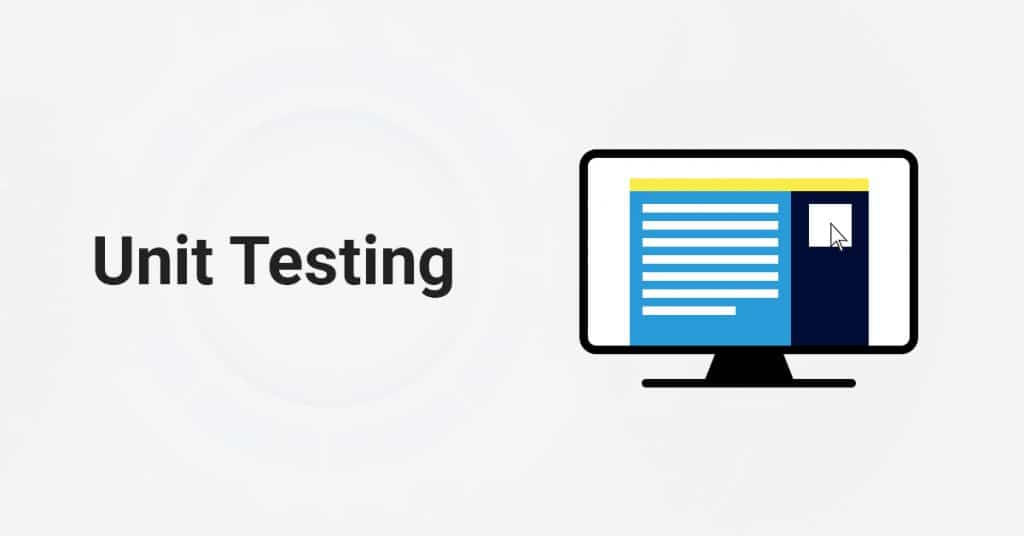
- Unit testing is a kind of white box testing technique where a piece of code is written to check whether the code snippet gives the desired outcome or not.
- In any anomaly, you can easily track the defaults and log them for improvement.
- Every unit test case created in a low-level design will be executed here.
- Integration Testing
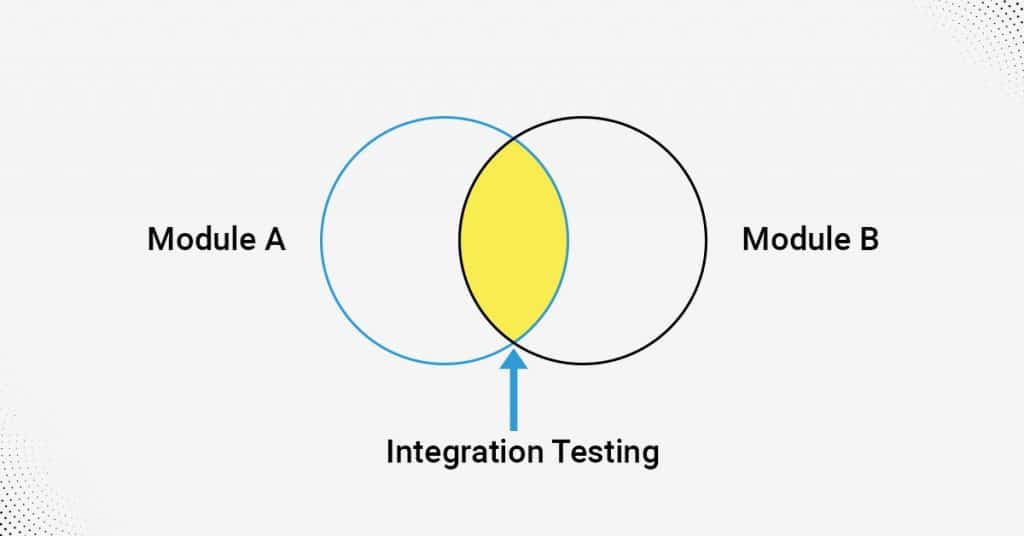
- This testing stage requires the integration of modules.
- Basically, it validates whether the components created in the design phase work together or not.
- The integration test cases created in the architectural design stage are executed here.
- You can automatically detect any defect and log for changes.
- System Testing
- In any app development or software development cycle, the actual full-fledged testing of the application or product is conducted at this stage.
- All the non-functional, functional, and unit test cases are executed here.
- One key aspect of this stage is the progress report. It updates all the feasibility of the software along with the risks mitigated.
- User Acceptance Testing
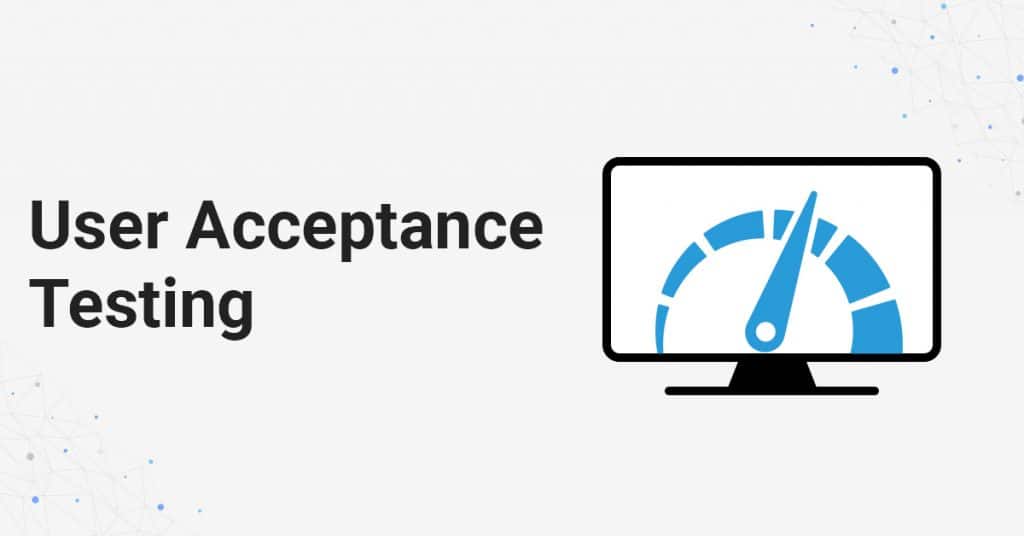
- This is a business requirement testing. It is conducted to validate the user environment with the business requirements.
- You can check the compatibility and other non-functional tasks here.
Note- Remember that both (Specification and Testing) streams run side by side, creating a V shape.
When To Use The V Model?
The V approach is highly used in all kinds of software development projects; however, understand that you do not need to follow the concept on certain projects.
The V model is applicable:
- When the requirements are pre-defined.
- The project’s acceptance criteria are well defined.
- The project is neither too small nor too complex.
- Resources are stable.
- Tools and technology implied are not dynamic.
- There are no prototypes produced; therefore, only choose this model when you are highly confident of your user requirement.
Under these conditions, the V software development lifecycle model might give you practical and best results.
The objective of the V Model
V model provides you guidance for systematic planning and execution of the software development project. You can achieve the below objectives from the V model approach:
- Quality and improvement
It has a standardized process; therefore, the model guarantees complete results. Since these results are checked from the very first stage, there is no compromise with the quality, and you always get a scope for improvement.
- Minimal project risks
With the V model, the control and transparency keep improving at every stage. This, in turn, enhances the project management process.
- Cost reduction
You can estimate the cost for development, operation, production, and maintenance at a very early phase. This will help you reduce the dependency on the supplier and other services, saving you cost and effort.
Advantages of using the V SDLC model
- The V model is relatively easy to implement since the process is pre-defined.
- Testing runs parallel with planning, designing, and coding. This saves you a lot of time. Thus, higher success rate than the waterfall model.
- You can easily detect the anomalies and prevent them from crashing your system in the future.
- The model works perfectly for the projects where the requirements are defined, and you have ample resources.
Limitations to V SDLC model
- The V model is manageable yet not flexible. It plays rigidly in the development process but can be dynamic in app development.
- If you make any changes midway, you might have to update all the primary documents.
- You do not get the option to generate a prototype. Hence, you always have a risk of not testing customer expectations.
- It leads to more documentation work whenever you have multiple projects to conclude.
Final Thoughts
I hope you were able to cover all the crucial aspects related to the V SDLC model. The approach is comprehensible and might help you develop a quality software product in the minimum period. Enterprises prefer the V model due to its standard features and risk-free procedure. But before you make a final decision, make sure you have ample insights and resources for this, so you do not end up compromising with the quality. Now, go ahead and create a mind-blowing software.

